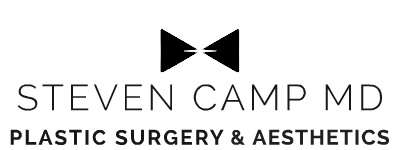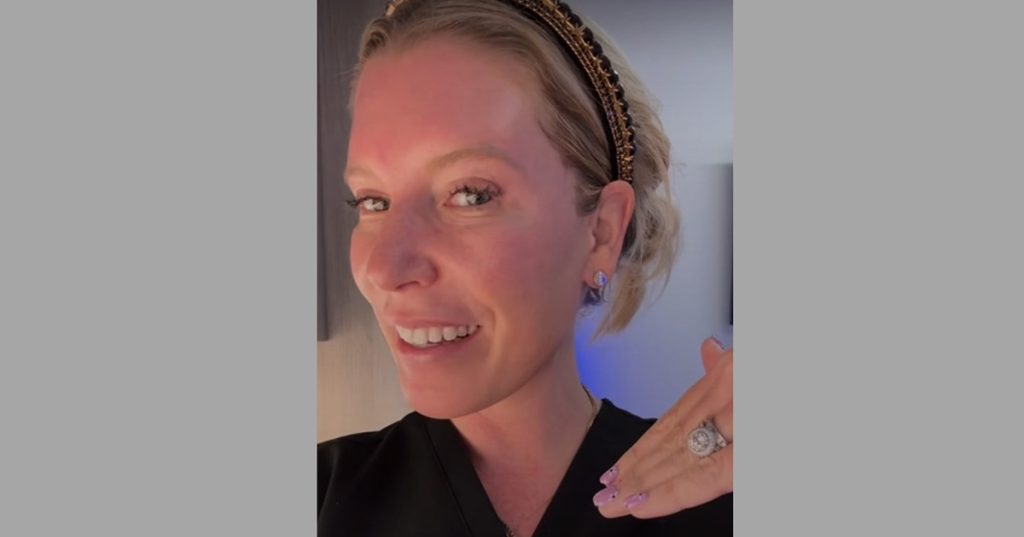You might have heard that you’re too young for a facelift. Well, I’m here to tell you that narrative misses the mark. I’m a nurse practitioner, co-owner of Camp Plastic Surgery (with my board-certified plastic surgeon husband), and yes, I’ve had a deep plane facelift.
Because of that experience, I believe more than ever that the decision to rejuvenate isn’t about hitting a certain age, it’s about what you’re seeing, how you feel, and what you want going forward. Especially if you’re in your late 30s or 40s, early intervention can create subtle refinements and longer-lasting results.
Why Early Intervention Makes Sense
There’s a reason we’re seeing more patients in their 30s and 40s asking about facelifts at our Fort Worth practice. These patients aren’t looking for dramatic change; they’re looking to maintain, refresh, and stay ahead of the aging curve.
Early intervention is about choosing the right procedure at the right time, when your skin and tissues still have good elasticity and respond beautifully to gentle repositioning. Younger patients often enjoy longer-lasting results because their skin heals efficiently and supports surgical improvements for many years.
What Makes You a Good Candidate Now?
Many people assume a facelift is only for those in their 50s or 60s, but candidacy depends far more on anatomy than age. If you’ve started noticing softening along the jawline, early jowls, or faint neck laxity that nonsurgical treatments can’t quite fix, you might be ready for a more lasting solution.
Here are a few signs you could be an excellent candidate:
- You’re in good health, a non-smoker (or planning to quit), and ready to follow a thoughtful surgical plan.
- You’re noticing mild jowls, sagging through the cheeks, or early neck banding.
- You’ve tried fillers, laser treatments, or skin tightening, but still feel like your reflection doesn’t match your energy.
- You want subtle, natural rejuvenation—not a completely different face.
Why I Chose a Deep Plane Facelift at 46
I didn’t wake up one day thinking I wanted to look younger. I wanted to look right. I wanted to be less embarrassed to take a picture with Steven, Zoe, and Winston. I wanted to put on makeup without feeling like it was a waste of time.
I know my face. I have a trained eye, years of experience in acute care, and a front-row seat to aesthetic training every day. And what I saw in the mirror? It didn’t match how I felt.
That’s the thing – it isn’t about vanity. It’s about alignment. When your face looks tired, heavy, or hollow––but you feel sharp, energized, and powerful––it’s ok to want the two to match.
Yes, I underwent adeep plane facelift, and I have zero regrets.
Benefits of an Early Facelift
Early facelifts are about refinement, not transformation. Patients who act sooner often achieve the most seamless results, so natural that no one can quite tell what has changed, only that they look refreshed and confident.
Benefits include:
- Subtle changes: A facelift in your 30s or 40s focuses on restoration, not overhaul. It’s about regaining firmness, not creating tightness.
- Better longevity: Younger tissues heal faster and hold the lift longer, meaning your investment lasts for many years.
- Smaller procedures, bigger payoff: A mini lift or limited deep-plane approach may be enough to achieve your goals, often with less downtime.
- Confidence and energy: When your outer appearance aligns with how vibrant you feel inside, it can boost every aspect of your life.
- Delay future interventions: A light lift now may mean avoiding a more extensive procedure later.
What’s a Deep Plane Facelift Anyway?
If you’re picturing a wind tunnel tight face, stop right there. That’s not what Dr. Camp does.
The deep plane facelift is not your grandmother’s facelift. This technique goes under the SMAS (that’s the connective tissue layer under the skin) and it repositions the deep facial structures, not just the skin.
What you get is lifted, sculpted, and a naturally refreshed face – without the “done” look.
Bonus: recovery is smoother than you’d think, and the results last. Because we’re not pulling – we’re repositioning.
I was actually shocked by the experience. Everyone thinks it’s going to be very painful. I only took gabapentin and Tylenol for pain control. I can say I never would rate my pain over 3 out of 10.
A Word of Caution
Not everyone under 45 needs a facelift, and that’s okay. If your concerns are limited to early volume loss or texture changes, nonsurgical options such as fillers, laser resurfacing, or energy-based skin tightening can work wonders. What matters most is choosing the right approach for your stage of aging.
As the American Society of Plastic Surgeons notes, the best candidates are those whose anatomy—not age—indicates that surgery will make a meaningful, natural difference. At our practice, we’ll always be honest about what’s best for you now and what can wait for later.
Still Think 46 Is Too Young?
That’s okay. You’re allowed to think that, but let me be clear: if you’re noticing sagging, jowling, or heaviness in the midface, or you just feel like your outside doesn’t match your inside, you’re not crazy, and you’re not vain.
You’re just paying attention. And maybe you’re ready to fix the issue.
Because this isn’t about chasing youth. It’s about owning your face at every age.
Curious If a Facelift Is Right For You?
Let’s talk. No pressure, no judgement – just real info from someone who lives it, loves it, and might just be your new favorite NP. Request a consultation online or call (817) 228-4315 to meet with us.
I’m always here to talk about it. Because Stven is going to grab me and pull me into your consultation anyway!
Hugs and love,
Sara


Leave a Reply